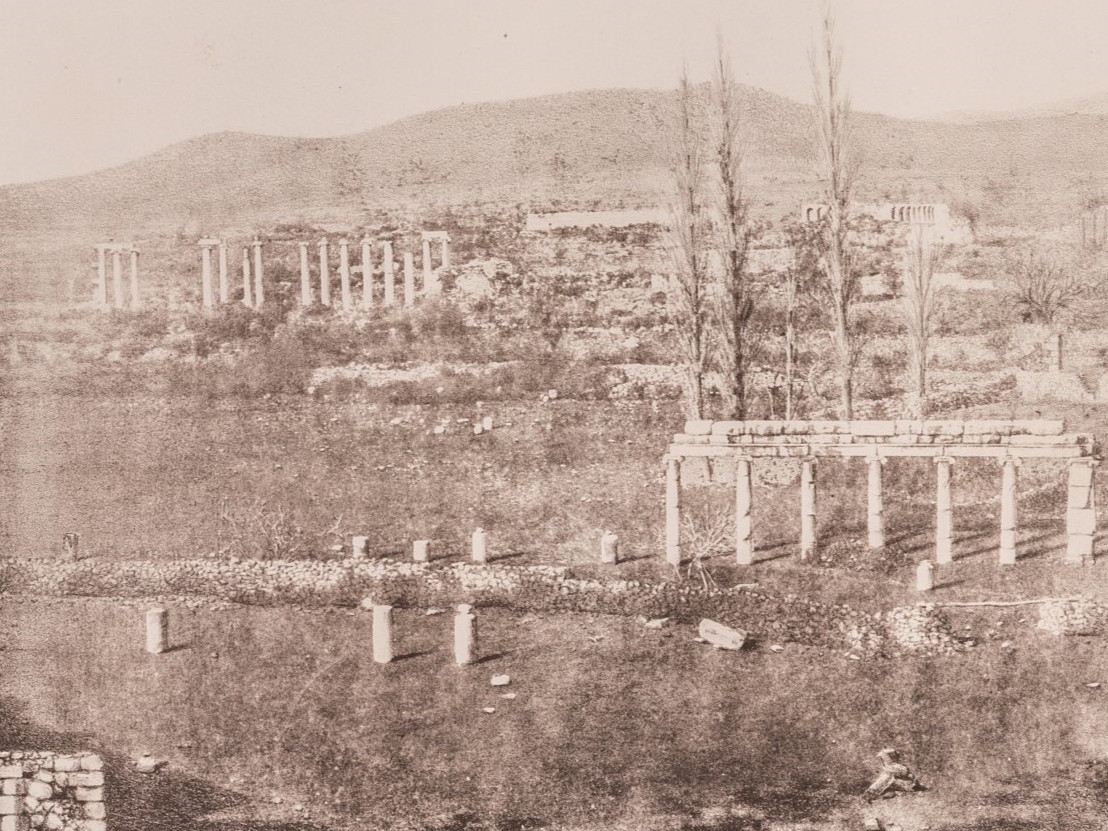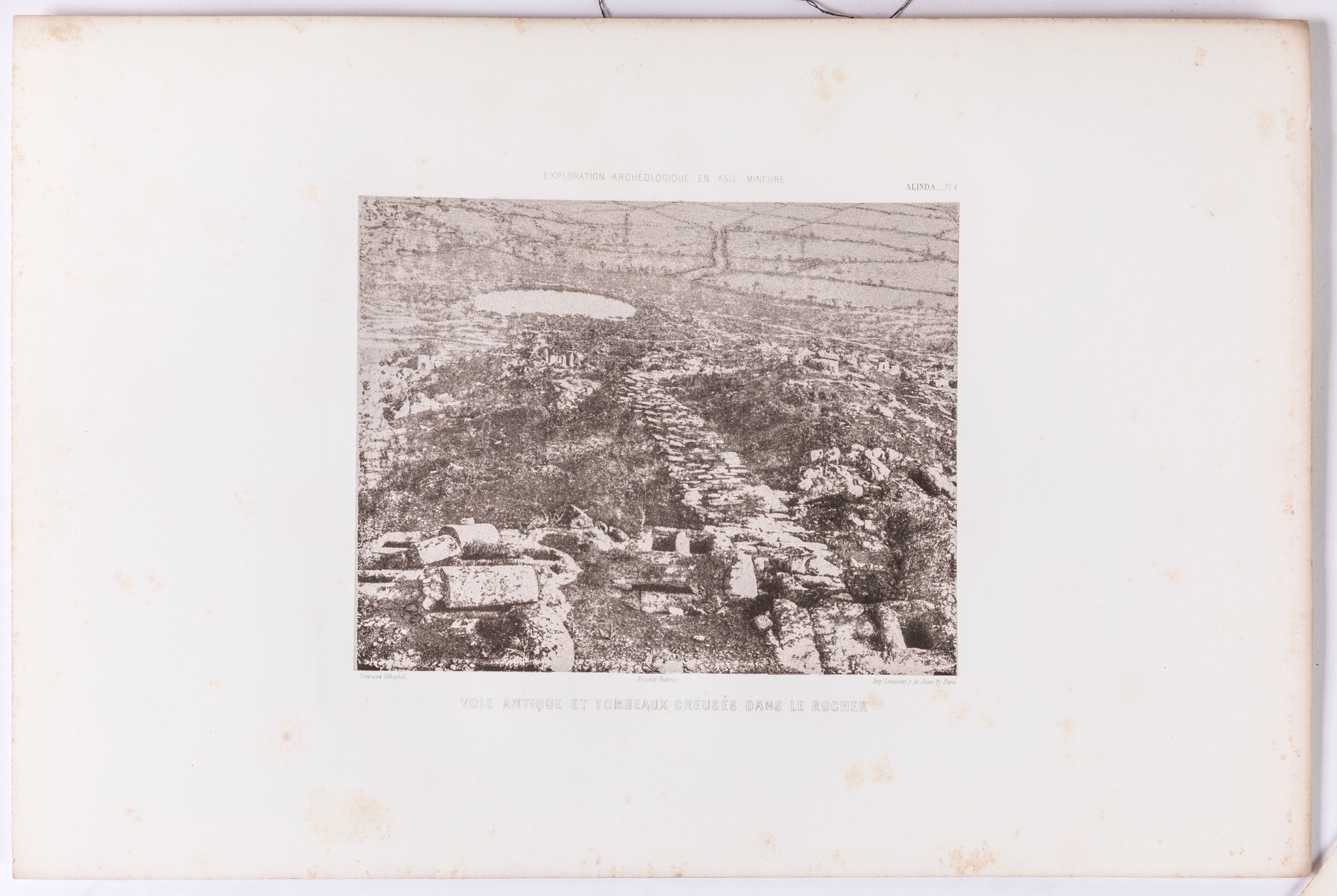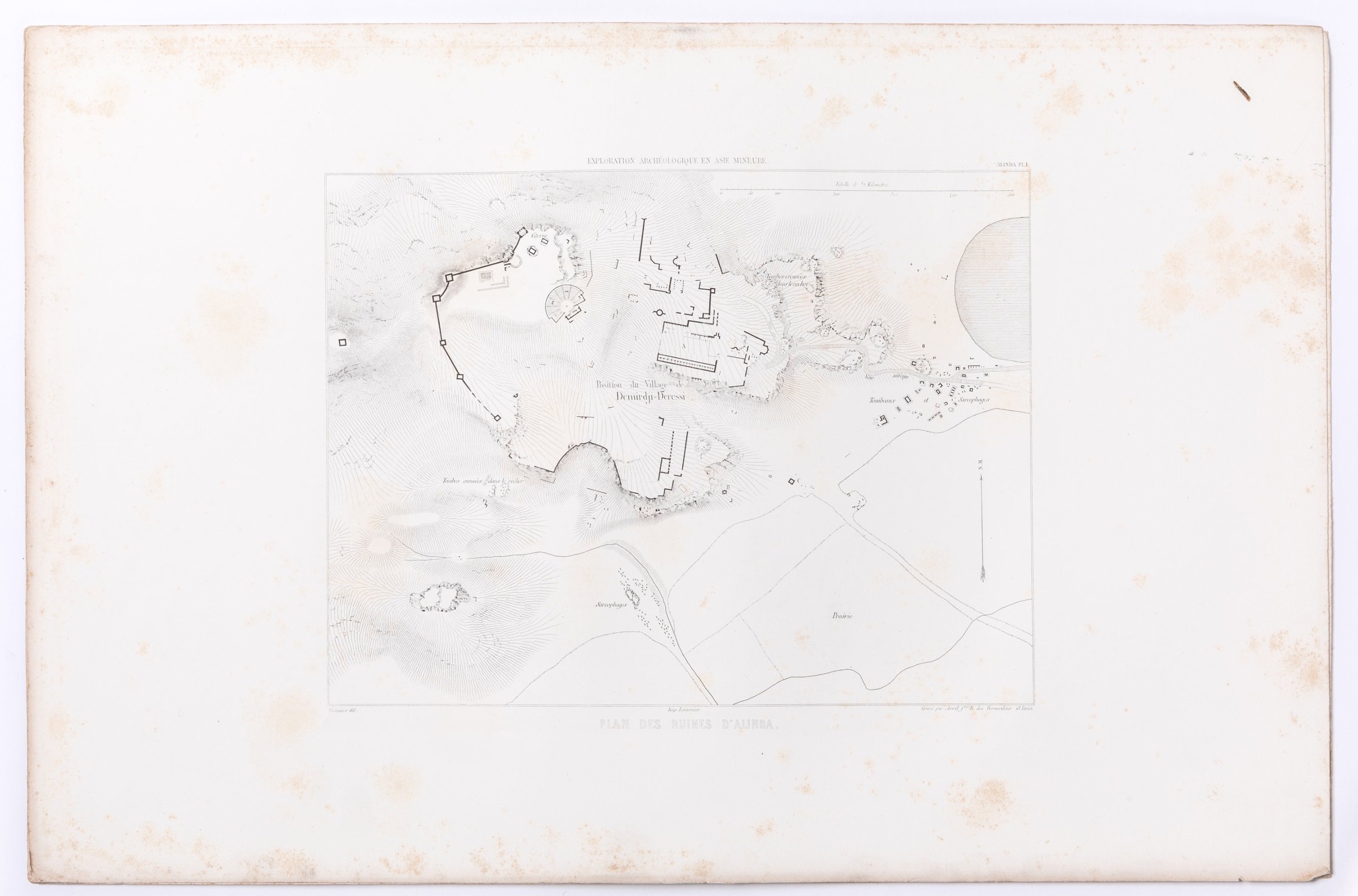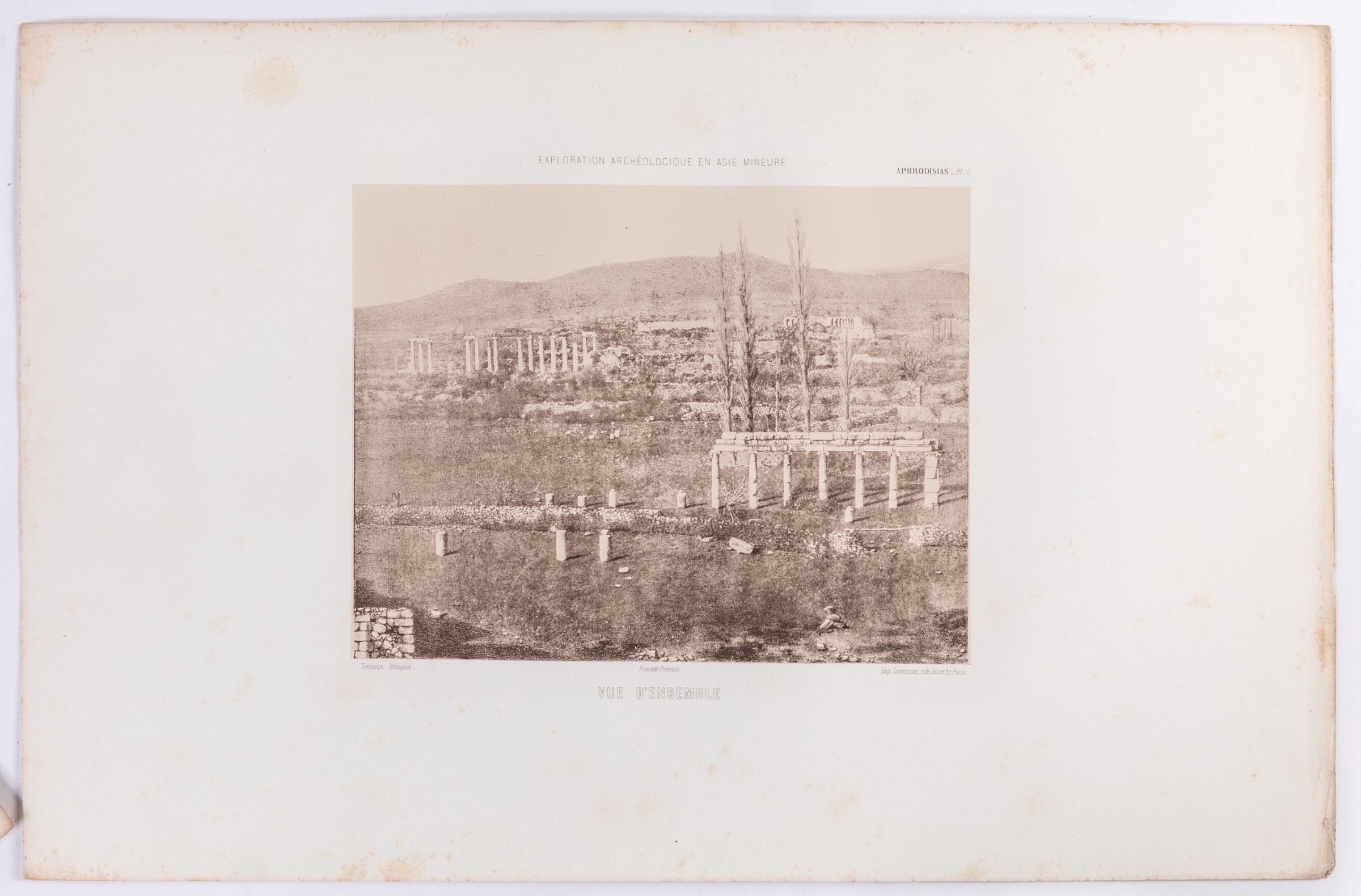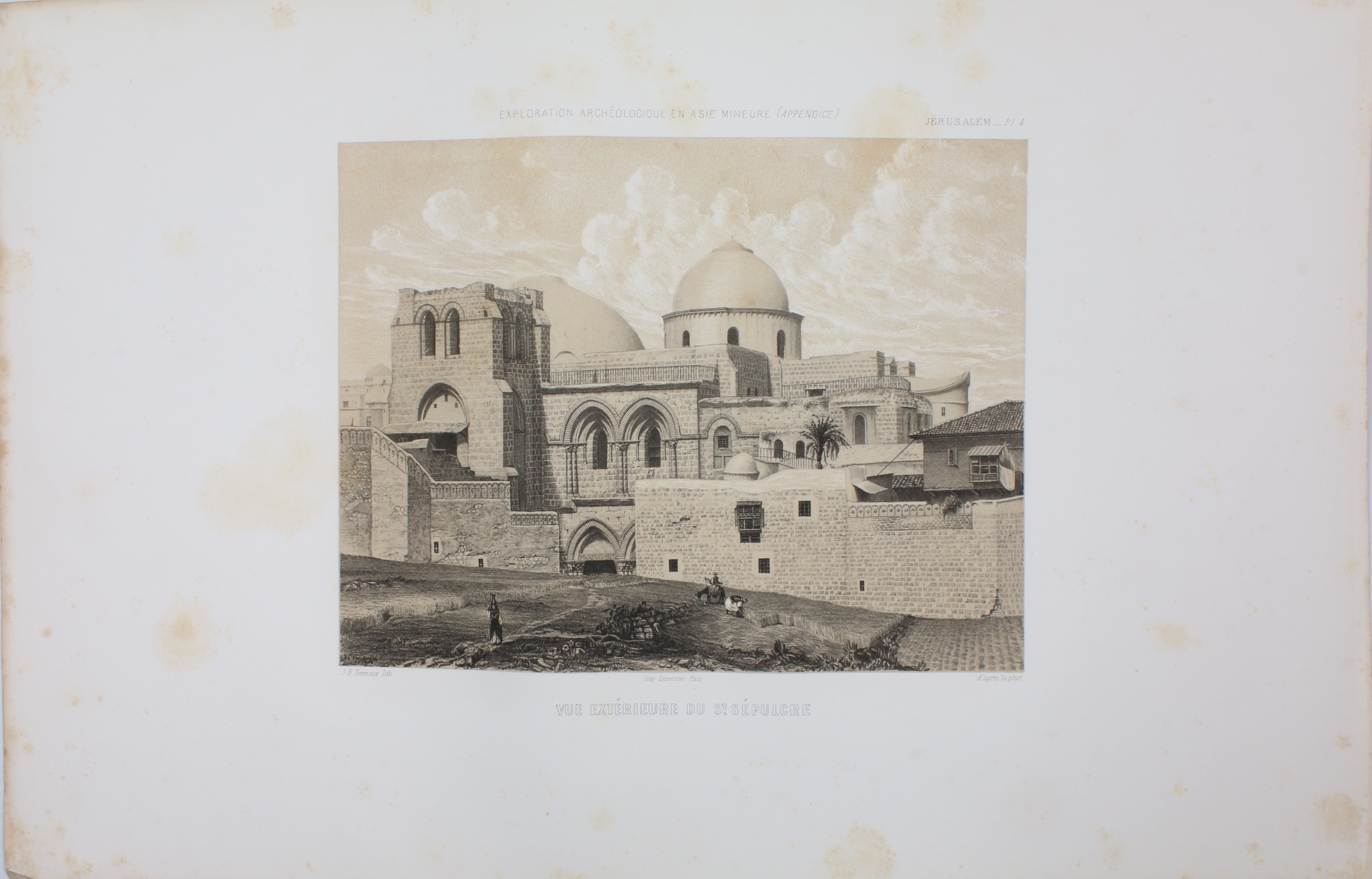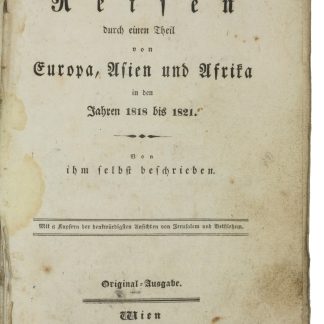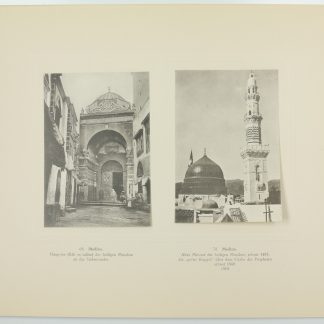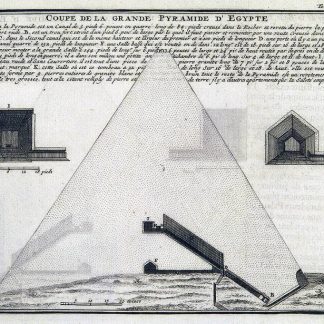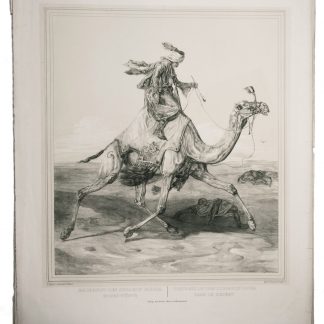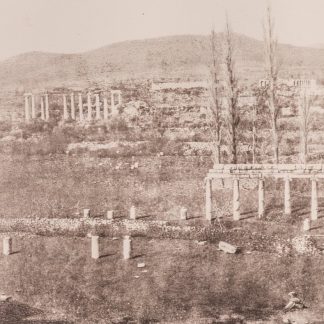The first photographs taken in Asia Minor
Exploration archéologique en Asie Mineure comprenant les restes non connus de plus de quarante cités antiques.
Oblong folio (560 x 370 mm). 101 plates (72 lithophotographs "Procedé Poitevin", 2 lithographs, and 27 plans, of which 10 folding) and 4 leaves of letterpress text. Stored loosely in contemporary marbled boards with original printed cover label; cloth spine professionally renewed. Cloth ties.
€ 48,000.00
Rare, early photobook on the archaeological excavations in Turkey and the Levant during the 1850s, a work which assured the architect-explorer Pierre Tremaux (1818-95) an eminent place in the history of photography. Includes views of Aphrodisias, Corycus, Ephesus, Hierapolis, Jerusalem, Magnesia, Milet, Perga, Priene, Seleucia, Smyrna, Tarsus, etc.
The calotypes here reproduced are among the earliest photographs taken in Asia Minor and are thus of great documentary interest. They were lithographed using the process discovered in 1855 by Alphonse Poitevin (1811-82), later awarded the Grand Prix du Duc de Luynes; Trémaux's work was one of the first to use this method.
"Pierre Trémaux was an architect who trained at the Ecole des Beaux Arts. He was also interested in travel, ethnology, architecture and geography. He is known for one epic series of voyages to Asia Minor, Egypt, Libya and Tunisia. The fruits of these travels were published in a series of books" (Jacobson). Having set out in 1847, Trémaux began taking photographs around 1853-54. While the results of his efforts were technically uneven, obliging him to substitute his salt prints with lithographs, the rare images that survive have ensured the photographer's lasting reputation. The entire subscription was announced for a series of 215 plates provisionally titled "Atlas de vues pittoresques, scenes des moeurs, types de vegetation remarquable", but the publication was interrupted in 1864, never to be completed.
Some edge flaws and duststaining to margins. Scattered foxing, more pronounced in some examples, others nearly flawless. Exceptionally rare: the work has appeared at auction only three times in 25 years; it was missing from the two great orientalist collections of Atabey and Blackmer. Provenance: from the collection of the French engineer and archaeologist Paul Gaudin (1858-1921), a major patron of the Asia Minor collections in the Louvre, the Istanbul Museum, British Museum, and other institutions.
Ken Jacobson, Odalisques & Arabesques: Orientalist Photography 1839-1925 (Quaritch, 2007), p. 273. Goldschmidt & Naef, The Truthful Lens: A Survey of the Photographically Illustrated Book 1844-1914 (New York, 1980), p. 225. Andre Jammes & Eugenia Parry Janis, The Art of French Calotype (Princeton, 1983), p. 251.

